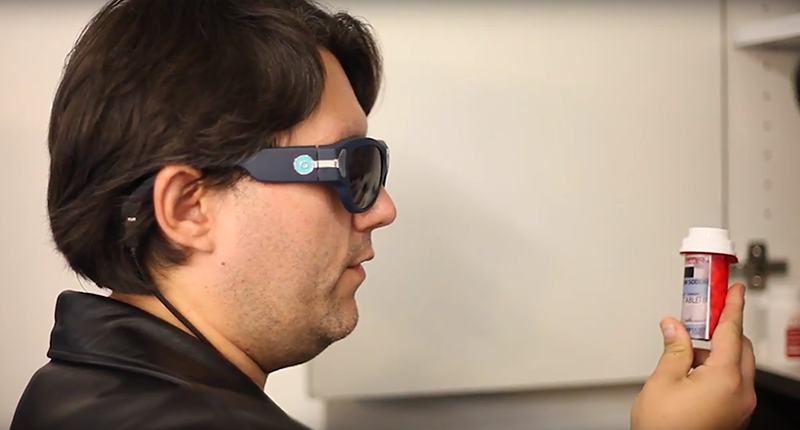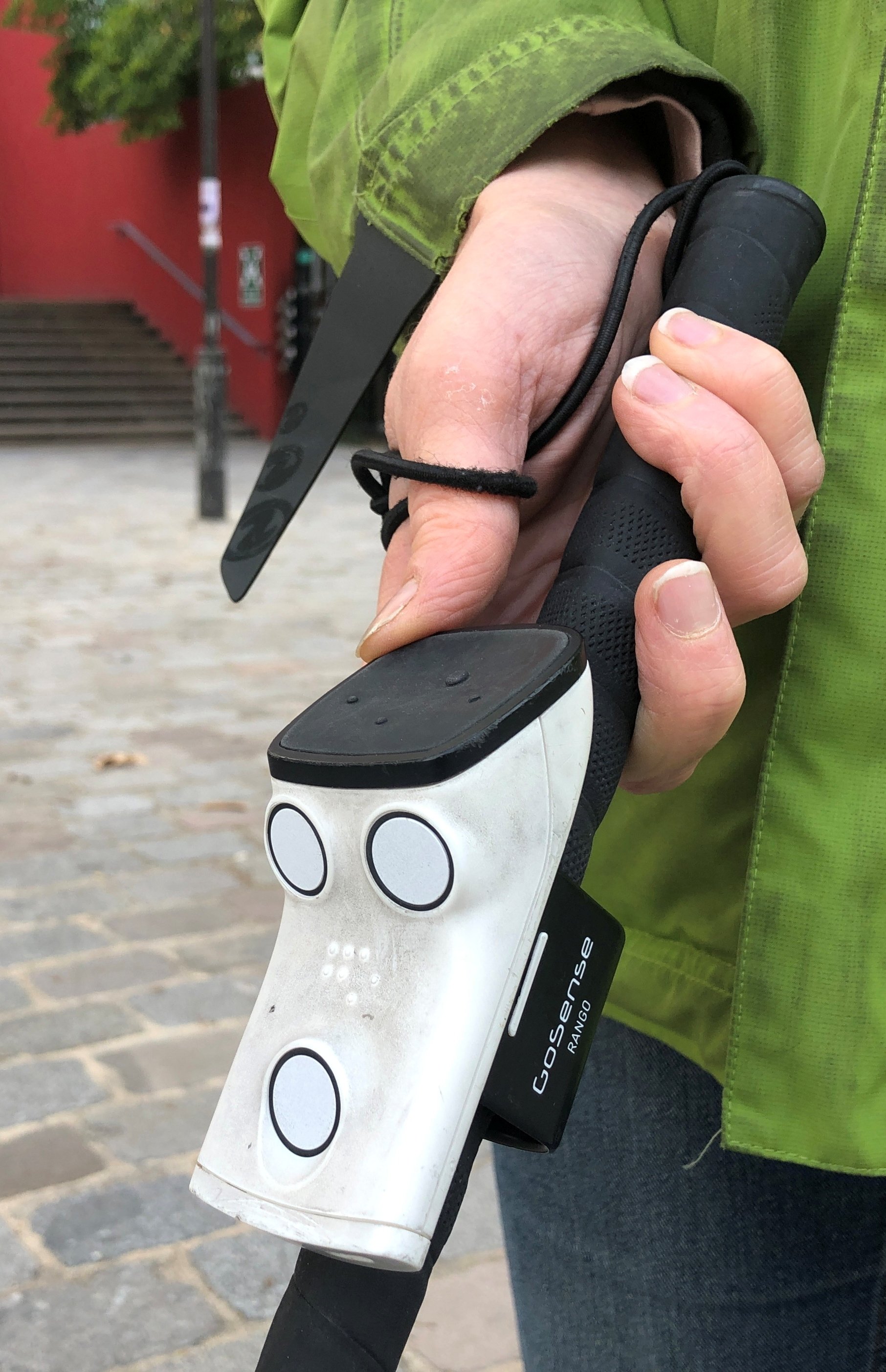Mobility Aids for Visually Impaired Users: Moving Through the World with Confidence
Mobility Aids for Visually Impaired Users: Moving Through the World with Confidence
Blog Article
Empowering Self-reliance With Assistive Technology for the Blind
The integration of assistive modern technology into the lives of individuals with aesthetic disabilities represents a substantial improvement in promoting freedom and self-sufficiency. From ingenious screen viewers to advanced smart walking sticks, these tools not just improve daily navigating and communication yet likewise encourage individuals to engage meaningfully in different aspects of life. As we discover the myriad benefits and real-world applications of these technologies, it comes to be important to take a look at the underlying variables that add to their performance and the capacity for future growths in this important area.
Summary of Assistive Modern Technology

The development of assistive technology is grounded in concepts of inclusivity and empowerment. Advancements in software application, hardware, and sensory enhancements provide users with alternatives customized to their certain requirements. From screen readers that transform message to speech, to responsive gadgets that convey information via touch, these devices transform the way people engage with their environments.
In enhancement to functional applications, assistive innovation fosters better social incorporation and involvement in various fields, consisting of education and work (Wearable technology for low vision). As r & d remain to progress, the possibility for assistive technology to even more improve the lives of aesthetically damaged individuals stays promising, paving the way for an extra equitable society where everyone can prosper
Sorts Of Assistive Devices
A range of assistive tools have emerged to sustain individuals with visual disabilities, each designed to satisfy certain requirements and boost day-to-day performance. These devices range from low-tech services to state-of-the-art technologies, providing diverse choices for individuals.
Low-tech devices consist of magnifiers and large-print materials that assist in analysis and writing. Braille devices, such as Braille slates and stylus pens, enable tactile reading and communication. Orientation and mobility aids, like white walking sticks, assist customers navigate their atmosphere securely.
On the greater end of the range, electronic zoom systems and screen visitors provide considerable support. Electronic magnifiers allow individuals to expand text and photos on screens, while screen readers convert electronic content into synthesized speech, facilitating access to details on mobile phones and computer systems.
Smart device applications likewise play a vital duty, giving features like message acknowledgment and navigation aid. Wearable modern technology, such as smart glasses equipped with augmented truth, is emerging as a promising device to enhance situational recognition.
Advantages of Assistive Modern Technology
The integration of assistive innovation considerably enhances the top quality of life for individuals with visual disabilities. These innovations encourage customers by promoting freedom, enabling them to browse their atmospheres better and execute daily jobs with better ease. Display visitors and magnification software permit people to access digital details, fostering expert and academic chances that might have previously been out of reach.
Additionally, assistive tools such as smart walking sticks and general practitioners applications give real-time navigation help, improving flexibility and safety and security. This increased autonomy not just improves self-confidence but likewise encourages social engagement, allowing customers to get involved even more totally in their neighborhoods.
Assistive technology also assists in communication, aiding customers attach with others with voice acknowledgment and text-to-speech applications. This ability is important for preserving partnerships and accessing vital details.
Furthermore, the customization choices readily available with numerous assistive modern technologies guarantee that customers Smart glasses for the visually impaired can tailor gadgets to their details needs, additionally enhancing functionality and performance. Overall, the benefits of assistive modern technology for people with aesthetic disabilities are profound, advertising a more comprehensive culture where everyone can pursue their ambitions and objectives.
Study and Success Stories
Highlighting the transformative influence of assistive modern technology, countless study show exactly how individuals with visual impairments have efficiently incorporated these devices right into their everyday lives. One compelling example involves an university pupil that utilized screen analysis software program to navigate online resources and scholastic materials efficiently. This technology not just promoted her education but additionally improved her confidence in joining conversations and group projects.
An additional situation study includes an expert who uses a mobile phone application developed for navigation and object recognition. By utilizing this app, he has actually gained back autonomy in both his individual and work environments, permitting him to commute separately and involve with associates much more properly.
Furthermore, a retiree shared her experience with braille e-readers, which allowed her to access a large array of literary works and stay connected with her neighborhood via publication clubs.
These success tales underscore the crucial duty of assistive innovation in cultivating self-reliance, boosting lifestyle, and advertising social combination for people with visual impairments (Screen readers for the blind). By welcoming these cutting-edge tools, customers can overcome difficulties and confiscate opportunities that add to their expert and personal satisfaction

Future Patterns in Assistive Innovation
Advancement in assistive modern technology is positioned to redefine the landscape of assistance for individuals with visual impairments. Emerging trends emphasize the assimilation of expert system (AI) and artificial intelligence, which boost the performance of gadgets that assist with navigation and details access. AI-driven applications are now capable of analyzing aesthetic data in real-time, enabling customers to engage with their setting much more independently.
In addition, the advancement of wearable technology is progressing quickly. Smart glasses equipped with increased truth (AR) can provide audio summaries of surroundings, changing exactly how customers engage with public spaces. These gadgets not only promote freedom yet additionally foster social incorporation.
Furthermore, the Net of Points (IoT) is making homes smarter, allowing for smooth connectivity in between assistive gadgets and day-to-day home appliances. This connectivity equips users by making it possible for voice-activated controls and automatic responses customized to individual requirements.
Verdict
In final thought, assistive modern technology plays a critical duty in empowering individuals with aesthetic impairments by improving their freedom and engagement with their environments. The varied range of gadgets and applications available not only promotes navigation and communication however additionally promotes social combination and possibilities for expert and individual development. As advancements continue in this field, the capacity for boosting the lifestyle for those with aesthetic problems will certainly expand, fostering higher freedom and empowerment.

Report this page